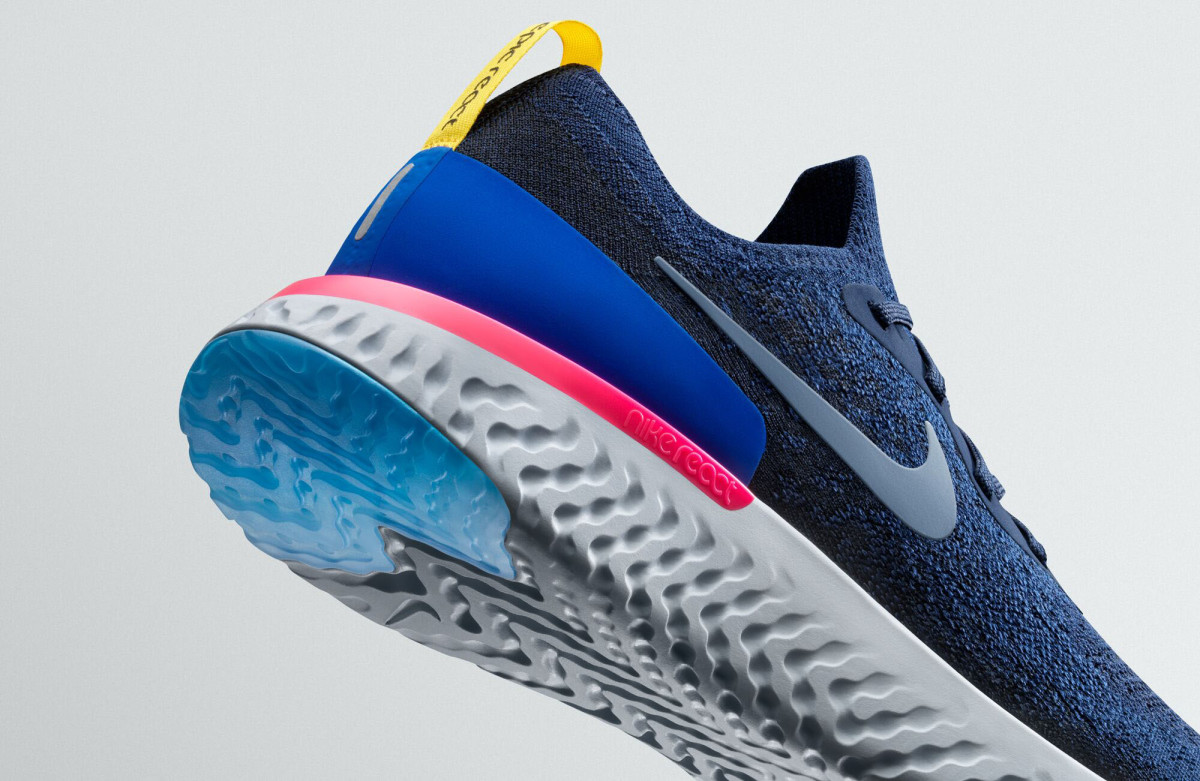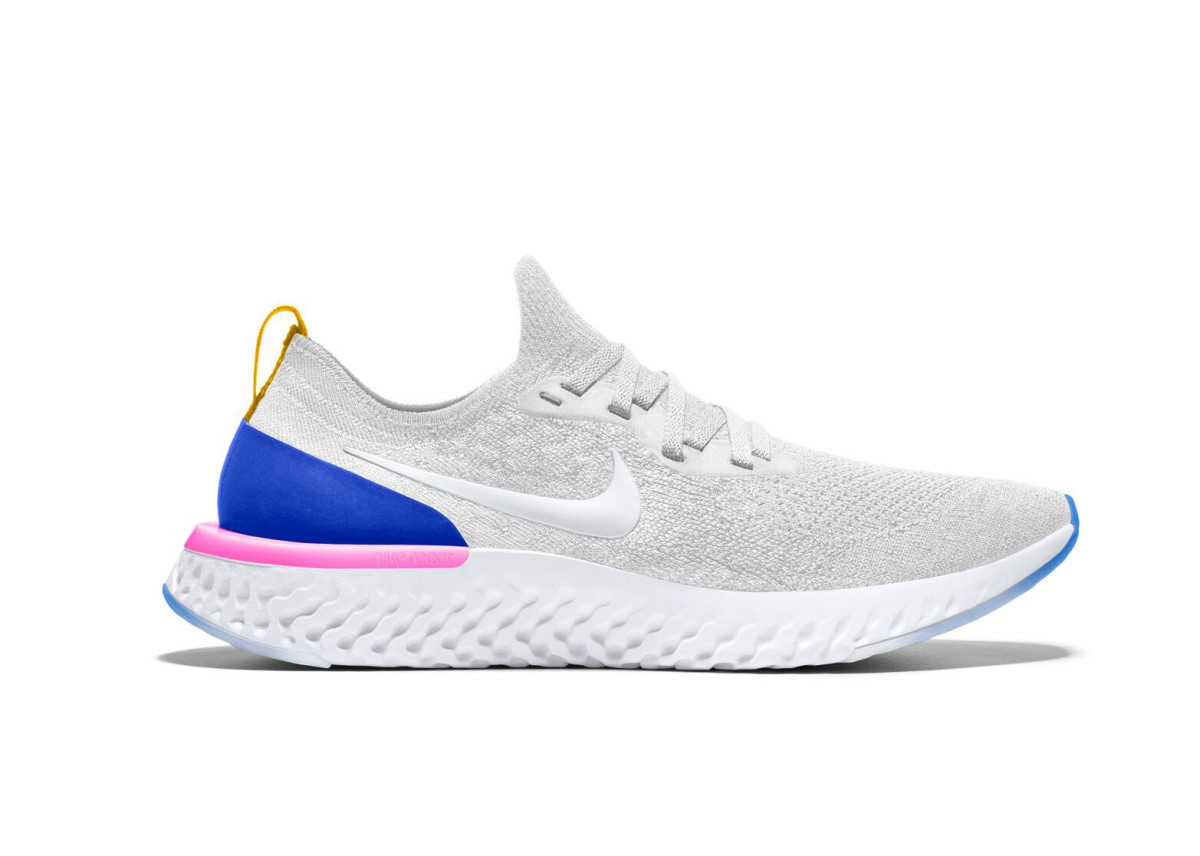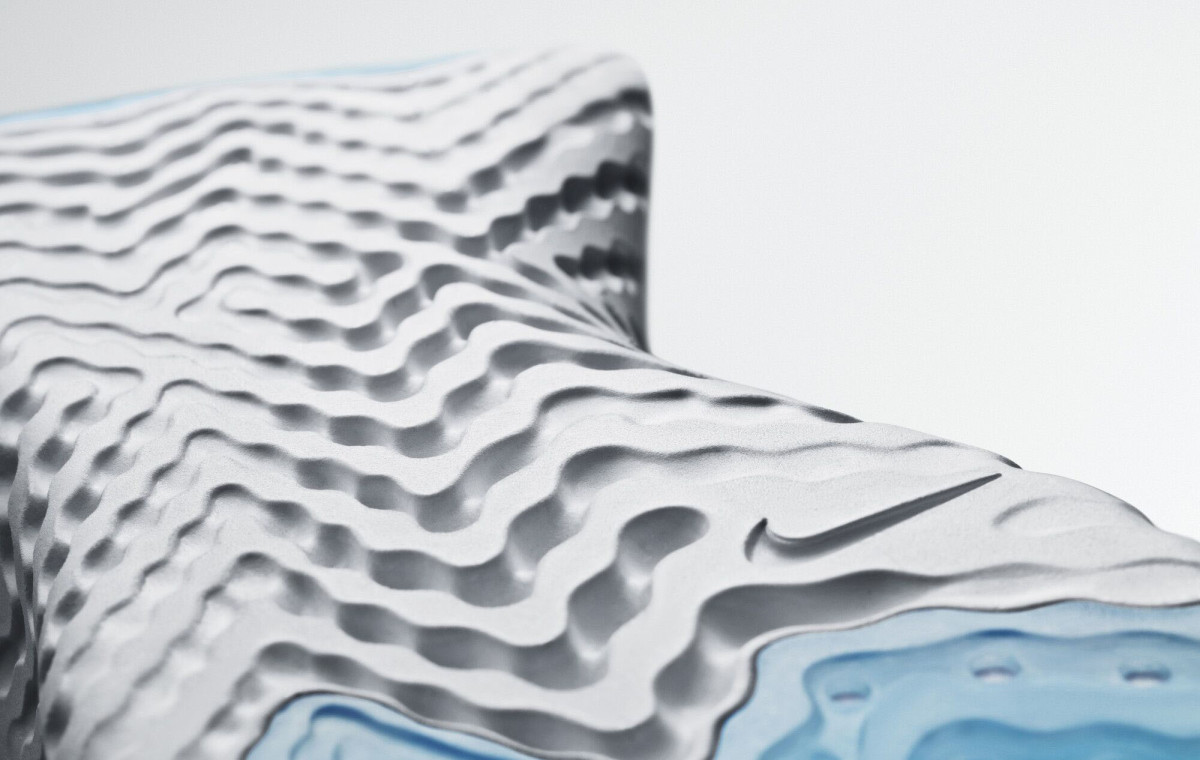Nike Unveils New Epic React Flyknit Running Shoe

On Tuesday, Nike revealed its latest innovation: a running shoe with a brand new technology that promises to “do it all” for elite and everyday runners alike.
The Nike Epic React Flyknit ($150) features a simple, knit upper on top of a single block of thick foam. At first glance, the white layer seems like an upgraded version of the brand’s Lunar technology, but this foam is different: it’s the “lightest, softest, smoothest and most responsive foam that we’ve created for runners to date,” says Brett Holts, vice president of Nike running footwear.

Dubbed Nike React, the proprietary foam is made of synthetic rubber (instead of EVA-based foams used in the past) and was created after more than 400 different combinations of chemical and product engineering and 17,000 miles of runner testing. Why so many iterations? The goal was to build something that checked all the boxes when it comes to what runners look for in a shoe: lightweight, durability, cushioning and energy return.
I first tested out the Nike Epic React Flyknit in November 2017, for a short, one-mile run on a treadmill at the Nike headquarters in New York City. It was soft, comfortable and the sock-like Flyknit material seemed more snug and better fitting than previous Flyknit sneakers I had tried. I actually immediately compared the feeling to wearing soccer cleats—I always liked my cleats extra tight and form fitting, so that they almost felt like part of my foot and provided me with a better feel on the ball. According to Holts, that type of feeling is what Nike is hoping runners feel with this new shoe.

“We want it to feel like the upper just disappears. No distractions on the top of the foot, which helps amplify the cushioning experience that much more,” he says. “[The foam is] giving you that really soft and compliant experience upon impact, but then immediately giving you that energy return,” says Holts.
After some more testing, the shoe does remind me of other sneakers on the market that offer a springy and responsive feel, such as the Brooks Levitate and the adidas Ultra Boost. But the one difference I noticed right away with the Nike Epic React Flyknit is the noticeably lighter and snug feel on my foot. Because I have high arches, I typically gravitate to a running sneaker with some extra support when logging longer distances; besides treadmill workouts, I only used the Nike Epic React Flyknit on two, four-mile runs outdoors but I felt comfortable in them and I'm interested to see how they feel after some more lengthy runs.
Besides the improved Flyknit, the shoe also features a distinct, hot pink piece around the heel. (Yes, the fuchsia color and piece is standard in both the men's and women's sizes and colorways.) The brand says this piece is an injected TPU heel clip that is there to maximize the foam on the foot and to provide some extra stability and support for certain runners who need it. (Heel strikers like me appreciate this!) Using data points from elite and everyday athletes, Nike also utilized computational design—mathematical formulas and algorithms—to match athlete data and create the design pattern you see on the sole. The deeper parts of the pattern are where there is more cushioning, and the shallower areas provide more firmness.

“Traditionally, by hand, we would start with the sample size and then grade up and down the size curve, so every shoe would be the same,” says Holts. “Now every size is different for both genders.”
Overall, the sneakers feel great on my feet—soft and squishy, but not too much, with a nice bouncy feel underfoot and a comfortable fit—and I think anyone looking for a sleek running shoe that provides a wide range of benefits should at least give these shoes a try. The Nike Epic React Flyknit hits stores and Nike.com on February 22.
